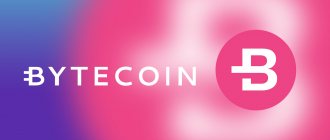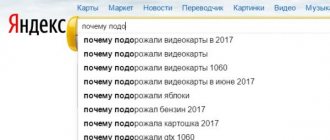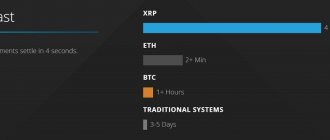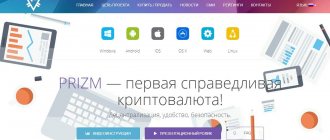Image: Pexels
The stock exchange is far from the only place where investors can make transactions with shares and other assets. In the event that two counterparties want to agree directly on special terms, they can use the so-called over-the-counter (OTC) market.
Today we will talk about how this market works, how the process of making transactions on it differs, and why a stock broker is needed here.
Note
:
The over-the-counter market is a tool for experienced investors who for some reason are not satisfied with the terms of transactions that they can get on the exchange. To make transactions on the over-the-counter market, you will need to open an online brokerage account.
What is traded on the over-the-counter market?
On the over-the-counter market, investors can make transactions with various types of assets: from stocks to all kinds of bonds, derivatives and structured products.
Often there is practically no information about specific financial instruments in open sources. The agreement under which the transaction takes place differs from the standard agreement for the purchase/sale of financial instruments on the stock exchange. In it, the parties agree on conditions such as the purchase or sale price, the type of instrument, as well as possible additions.
Advantages and disadvantages of the over-the-counter market
The main advantages of the over-the-counter market include:
- Much wider investment opportunities. Compared to the list of securities that are presented on official trading platforms, there are much more investment opportunities here;
- Due to the absence of short- and medium-term speculators, price movements are smooth and more predictable;
- Lack of strict rules inherent in exchange trading. You can trade at any time, from anywhere and with any number of shares (regardless of lots);
- Potentially higher returns, both in terms of dividends and due to an increase in the stock price.
Main disadvantages:
- Low liquidity of over-the-counter market instruments eliminates the majority of short- and medium-term investors. An investor must be prepared for the fact that the money he has invested will be literally frozen for a fairly long period of time. Shares purchased on the over-the-counter market are almost impossible to sell in a short time, not only at a profit, but even at the purchase price. Therefore, the over-the-counter market is the domain of long-term investors;
- Higher transaction costs compared to the exchange market. Most of the transactions here are carried out through intermediaries (dealers), who find a seller and a buyer in advance, and then set their reward in the form of a spread between the purchase price and the sale price (and due to the fact that it is not so easy to find sellers and buyers here, this the spread can reach very significant sizes);
- The complexity of the analysis is due to the fact that companies not listed on official stock exchanges are not required to publish their reports to the same extent as companies issuing shares traded on the stock exchange. As for technical analysis, it is complicated by the low liquidity of the market (the price chart is simply not able to display the main trends due to the fact that the frequency and volume of transactions for the specific financial instrument in question is very small);
- Finally, the lack of strict rules, which we wrote down a little higher in the text as an advantage of the over-the-counter market, is also its disadvantage. After all, companies whose shares are traded on the stock exchange are required to follow a number of rules and meet a number of characteristics, which increases the level of their reliability as an investment object. This cannot be said about the over-the-counter market, where, in fact, shares of a car service center located in a nearby garage can be sold (the main criterion for the success and reliability of which is the degree of sobriety of the car repairman).
Risks
The structure of OTC markets involves a significantly higher degree of risk.
In particular, there are counterparty risks - that is, the likelihood that one of the parties to the transaction will go bankrupt before fulfilling its part or will not be able to do so in the future. The opacity of the OTC market also contributes to increased risk levels. For example, during the US mortgage crisis in 2007-2008, many CDO (Collateralized Debt Obligation) and CMO (Collateralized Mortgage Obligations) derivatives were traded exclusively on the OTC market.
Banks issued CDOs based on bad home loans made to people who couldn't pay them or made a minimum down payment. With the development of the crisis in the US real estate market, such financial instruments became toxic, and holders en masse tried to get rid of them. However, liquidity falling almost to zero made solving this problem extremely difficult.
Why do you need a broker?
To avoid such situations, investors need to carefully calculate possible risks or attract specialists who can do this.
This is precisely the role of the stock broker in conducting such transactions. Within the over-the-counter market, a company can be both a broker and a settlement center, helping to assess all risks. For example, ITI Capital provides support services for over-the-counter transactions in shares, Eurobonds, forward or option contracts, structured products, and repos. We carry out transactions of any complexity with a large number of financial instruments.
Current information on over-the-counter transactions as of 08/14/2020 17:55
- Exchange information
- Over-the-counter transactions
| Archive of over-the-counter transactions: by instrument for the period | by instruments as of date |
| Totals for the day | |
| Number of transactions, pieces | 272 |
| Volume per day, rub. | 6 565 684 464 |
| Information on transactions on the basis of which 5 or more percent of the issuer’s securities are acquired |
| There are no deals for this date |
| Information on transactions on the basis of which no more than 5 percent of the issuer’s securities are acquired |
| # | Code c/w | Issuer's name, type of security | State number registration | Completion period, days | Number of transactions | Transaction volume, rub. | Number of c/w | Max. price | Min. price | Estimated price |
| 1 | AGRO | OJSC Rusagro Group, JSC | Up to 5 | 1 | 3 713 684,34 | 4 920 | 754,81389 | 754,81389 | 754,81389 | |
| 2 | GMKN | OJSC MMC Norilsk Nickel, JSC | 1-01-40155-F | Up to 5 | 1 | 982 770 | 47 | 20910 | 20910 | 20910 |
| 3 | Mail.ru Group Limited (Mail.ru Group Limited), Depository receipts of a foreign issuer for shares | Up to 5 | 15 | 70 792 945,26 | 34 064 | 2084,66687 | 2035,22526 | 2078,23352 | ||
| 4 | NVTK | OAO NOVATEK, JSC | 1-02-00268-E | Up to 5 | 1 | 1 171,6 | 1 | 1171,6 | 1171,6 | 1171,6 |
| 5 | PLZL | OJSC Polyus Gold, JSC | 1-01-55192-E | Up to 5 | 2 | 3 817 100 | 230 | 16610 | 16290 | 16596,08696 |
| 6 | ROSN | OJSC NK Rosneft, JSC | 1-02-00122-A | Up to 5 | 2 | 4 734 469,21 | 12 250 | 388,23593 | 380,06 | 386,48728 |
| 7 | RU000A0JXPG2 | PJSC "GTLK", exchange-traded bond | 4B02-04-32432-H-001P | Up to 5 | 1 | 98 716 | 92 | 107,3 | 107,3 | 107,3 |
| 8 | RU000A0JXS83 | DF YaO, Subfederal Bond | RU35015YRS0 | Up to 5 | 1 | 38 500 | 35 | 110 | 110 | 110 |
| 9 | RU000A0JXU14 | Ministry of Finance of Russia, Eurobond | 12840079V | Up to 5 | 8 | 1 859 355 294,55 | 89 | 143,13 | 141,25 | 141,91393 |
| 10 | RU000A0ZYBS1 | PJSC Sberbank, Exchange bond | 4B020301481B001P | Up to 5 | 1 | 50 550 | 50 | 101,1 | 101,1 | 101,1 |
| 11 | RU000A0ZYC98 | PJSC MegaFon, exchange-traded bond | 4B02-03-00822-J-001P | Up to 5 | 1 | 35 598 | 34 | 104,7 | 104,7 | 104,7 |
| 12 | RU000A0ZYHX8 | Finance Committee, Subfederal Bond | RU35001GSP0 | Up to 5 | 1 | 51 600 | 48 | 107,5 | 107,5 | 107,5 |
| 13 | RU000A0ZYT40 | PJSC NK Rosneft, Exchange Bond | 4B02-04-00122-A-002P | Up to 5 | 1 | 93 005 | 89 | 104,5 | 104,5 | 104,5 |
| 14 | RU000A0ZYYN4 | Ministry of Finance of Russia, Eurobond | 12840080V | Up to 5 | 2 | 443 609 179,23 | 26 | 116,5 | 115,875 | 115,89904 |
| 15 | RU000A1006S9 | Ministry of Finance of Russia, Eurobond | 12840086V | Up to 5 | 1 | 18 742 032,38 | 1 | 127,312 | 127,312 | 127,312 |
| 16 | RU000A100UG9 | LLC "HKF Bank", exchange-traded bond | 4B020600316B | Up to 5 | 1 | 5 180 | 5 | 103,6 | 103,6 | 103,6 |
| 17 | RU000A100ZK0 | MTS PJSC, Exchange Bond | 4B02-12-04715-A-001P | Up to 5 | 2 | 14 546 | 14 | 103,9 | 103,9 | 103,9 |
| 18 | RU000A101D13 | LLC "GK "Segezha", Exchange bond | 4B02-01-00520-R-001P | Up to 5 | 1 | 2 001 | 2 | 100,05 | 100,05 | 100,05 |
| 19 | RU000A101GB7 | LLC "ROLF", Exchange bond | 4B02-02-00406-R-001P | Up to 5 | 2 | 6 987 | 7 | 99,85 | 99,8 | 99,81429 |
| 20 | RU000A101PP8 | PJSC "Sovcombank", Exchange bond | 4B02-04-00963-B-001P | Up to 5 | 3 | 565 943,4 | 566 | 99,99 | 99,99 | 99,99 |
| 21 | RU000A101S81 | PJSC RUSAL Bratsk, exchange-traded bond | 4B02-01-20075-F-002P | Up to 5 | 1 | 998,5 | 1 | 99,85 | 99,85 | 99,85 |
| 22 | RU000A101UR4 | JSC "BSK", Exchange bond | 4B02-02-01068-K-001P | Up to 5 | 2 | 8 056 | 8 | 100,7 | 100,7 | 100,7 |
| 23 | RU000A101XD8 | JSC MaximaTelecom, exchange-traded bond | 4B02-01-53817-H-001P | Up to 5 | 4 | 13 103 | 13 | 100,8 | 100,7 | 100,79231 |
| 24 | RU000A101XE6 | Sovcombank Leasing LLC, Exchange Bond | 4B02-02-00303-R-001P | Up to 5 | 151 | 34 400 863,7 | 34 401 | 100 | 99,99 | 99,9996 |
| 25 | SBER | OJSC Sberbank of Russia, JSC | 10301481B | Up to 5 | 2 | 19 088 318,71 | 79 860 | 239,15 | 239,02006 | 239,02227 |
| 26 | SU26212RMFS9 | Ministry of Finance of Russia, Federal loan bond | 26212RMFS | Up to 5 | 1 | 108 201 970,8 | 99 540 | 108,702 | 108,702 | 108,702 |
| 27 | SU26215RMFS2 | Ministry of Finance of Russia, Federal loan bond | 26215RMFS | Up to 5 | 1 | 110 463 432 | 103 780 | 106,44 | 106,44 | 106,44 |
| 28 | SU26217RMFS8 | Ministry of Finance of Russia, Federal loan bond | 26217RMFS | Up to 5 | 2 | 299 609 521,6 | 290 440 | 103,164 | 103,156 | 103,15711 |
| 29 | SU26218RMFS6 | Ministry of Finance of Russia, Federal loan bond | 26218RMFS | Up to 5 | 1 | 795 955 898,5 | 663 175 | 120,022 | 120,022 | 120,022 |
| 30 | SU26220RMFS2 | Ministry of Finance of Russia, Federal loan bond | 26220RMFS | Up to 5 | 1 | 51 093 487 | 48 050 | 106,334 | 106,334 | 106,334 |
| 31 | SU26221RMFS0 | Ministry of Finance of Russia, Federal loan bond | 26221RMFS | Up to 5 | 4 | 15 082,6 | 13 | 116,27 | 113,02 | 116,02 |
| 32 | SU26224RMFS4 | Ministry of Finance of Russia, Federal loan bond | 26224RMFS | Up to 5 | 4 | 11 636 853,5 | 10 766 | 110,26 | 106,05 | 108,08892 |
| 33 | SU26225RMFS1 | Ministry of Finance of Russia, Federal loan bond | 26225RMFS | Up to 5 | 2 | 693 595 400 | 630 800 | 110,05 | 109,95 | 109,95488 |
| 34 | SU26226RMFS9 | Ministry of Finance of Russia, Federal loan bond | 26226RMFS | Up to 5 | 1 | 64 724 312,1 | 56 910 | 113,731 | 113,731 | 113,731 |
| 35 | SU26230RMFS1 | Ministry of Finance of Russia, Federal loan bond | 26230RMFS | Up to 5 | 1 | 467 200 000 | 400 000 | 116,8 | 116,8 | 116,8 |
| 36 | SU26232RMFS7 | Ministry of Finance of Russia, Federal loan bond | 26232RMFS | Up to 5 | 3 | 245 027 829,2 | 239 460 | 102,402 | 102,31 | 102,32516 |
| 37 | SU29006RMFS2 | Ministry of Finance of Russia, Federal loan bond | 29006RMFS | Up to 5 | 6 | 346 127,5 | 337 | 104,83 | 102,67 | 102,70846 |
| 38 | TATN | OJSC Tatneft named after V.D. Shashin, JSC | 1-03-00161-A | Up to 5 | 3 | 167 902 254 | 278 646 | 608,26531 | 601 | 602,56474 |
| 39 | TATN | OJSC Tatneft named after V.D. Shashin, JSC | 1-03-00161-A | From 6 to 30 | 1 | 21 176 647,45 | 35 000 | 605,04707 | 605,04707 | 605,04707 |
| 40 | TATNP | OJSC Tatneft named after V.D. Shashin, ap. | 2-03-00161-A | Up to 5 | 2 | 857 250 | 1 550 | 555 | 535 | 553,06452 |
| 41 | TCSG | TCS Group PLC Holding, Depository receipts of a foreign issuer for a share | Up to 5 | 2 | 14 865 351,39 | 8 725 | 1706 | 1703,76469 | 1703,7652 | |
| 42 | VTBM | JSC VTB Capital Asset Management, Share of exchange-traded mutual fund | 3915 | Up to 5 | 1 | 59 999 994,16 | 58 445 917,21662 | 1,02659 | 1,02659 | 1,02659 |
| 43 | XS0088543193 | Ministry of Finance of Russia, Eurobond | MK-0-CM-119 | Up to 5 | 20 | 852 379 232,71 | 6 670 | 173,9 | 173,5 | 173,61597 |
| 44 | XS0114288789 | Ministry of Finance of Russia, Eurobond | SK-0-CM-128 | Up to 5 | 1 | 22 679 163 | 900 000 | 116,05 | 116,05 | 116,05 |
| 45 | XS0767473852 | Ministry of Finance of Russia, Eurobond | 12840061V | Up to 5 | 2 | 41 642 990,53 | 2 | 141,625 | 141,25 | 141,4375 |
| 46 | XS0971721450 | Ministry of Finance of Russia, Eurobond | 12840068V | Up to 5 | 2 | 32 743 204,43 | 2 | 111,22 | 111,2 | 111,21 |
| 47 | XS2196334671 | Gaz Finance Plc, Bonds of a foreign issuer | Up to 5 | 1 | 37 033 370,94 | 500 | 100,625 | 100,625 | 100,625 | |
| 48 | YNDX | Yandex N.V. (Yandex NV), Shares of a foreign issuer | Up to 5 | 2 | 6 312 477,47 | 1 420 | 4463,51029 | 4437,80315 | 4445,40667 |
Notes
Information on over-the-counter transactions is disclosed in accordance with Bank of Russia Regulation No. 437-P dated October 17, 2014, “On activities for conducting organized trading.”
Information on over-the-counter transactions is provided by brokers, dealers, managers, joint-stock investment funds, management companies of investment funds, mutual funds and non-state pension funds in accordance with the “Regulations on the provision of information on concluding transactions”, approved by Order of the Federal Financial Markets Service of Russia No. 06-67/pz -n dated June 22, 2006
Moscow Exchange PJSC discloses information on OTC transactions solely on the basis of information provided by financial market participants in relation to OTC transactions completed by them in accordance with the Rules for the provision of information on OTC transactions by brokers, dealers, managers, joint stock investment funds and management companies and maintaining a register of OTC transactions Public Joint Stock Company "Moscow Exchange MICEX-RTS"
Explanation of table field headers:
- “Code security” - security code accepted on the exchange,
- “Name of the issuer, type of security” - name of the issuer (name of the management company and name of the mutual investment fund), type, category (type) of securities,
- “Government number. registration" - the state registration number of a security, determined by the security code,
- “Execution date” - the deadline for the parties to fulfill their obligations for payment and delivery of securities,
- “Number of transactions” - the total number of transactions,
- “Volume of transactions, rub.” — total volume of transactions,
- “Number of securities” - the total number of securities that are the subject of transactions,
- "Max. price" - the highest price of one security,
- “Min. price" - the lowest price of one security,
- “Settlement price” - the settlement price at the end of the trading day, determined as the result of dividing the total sum of prices of all over-the-counter transactions with the specified security completed during the day by the total number of securities for the specified transactions.
Dear site visitors, to send your suggestion or ask a question, use the feedback form.
We value your opinion and will definitely consider your questions and, where possible, confirm receipt of the Letter and provide a written response.
If there are justified and significant claims, the Exchange, together with the Expert Councils, will take measures to develop and implement appropriate changes.











